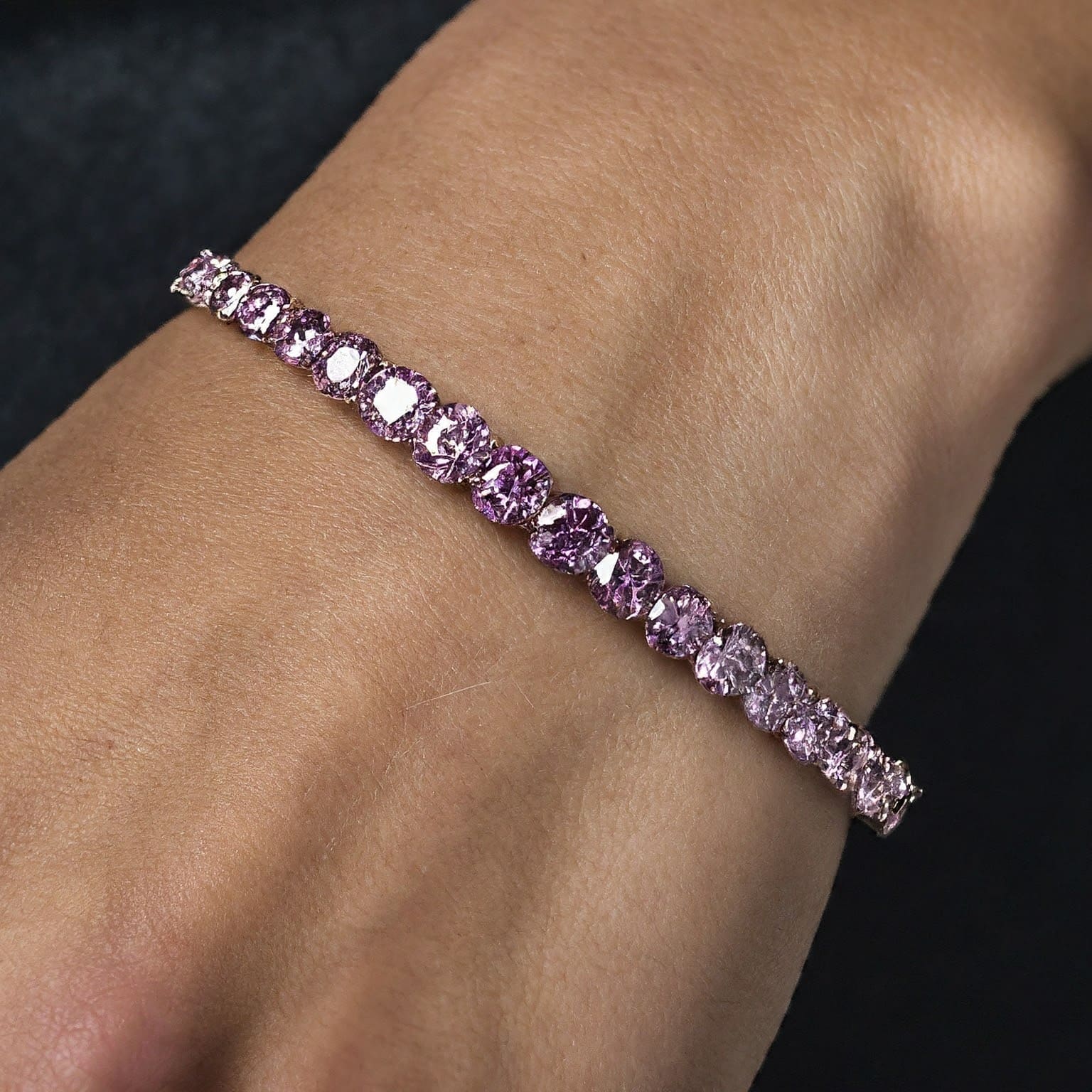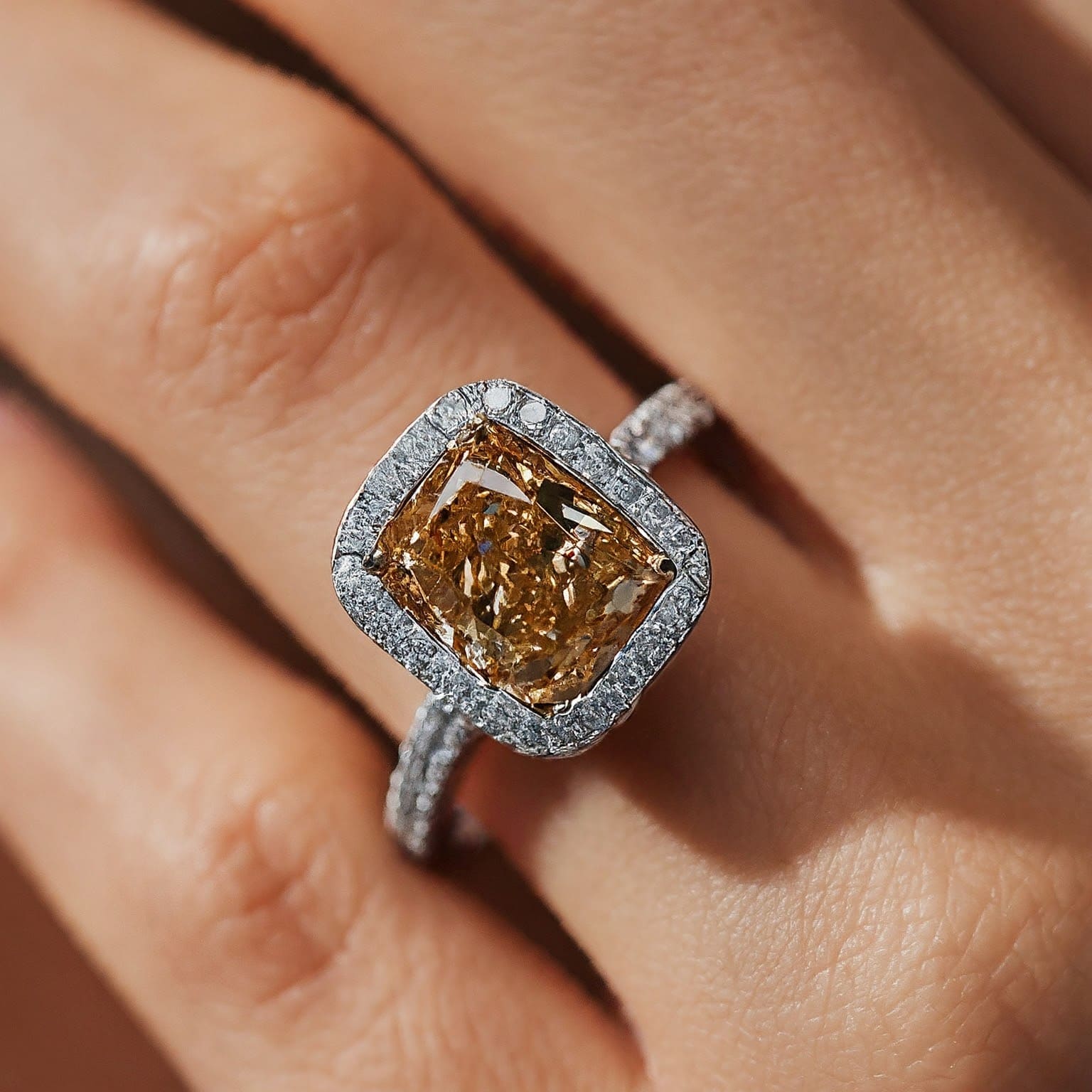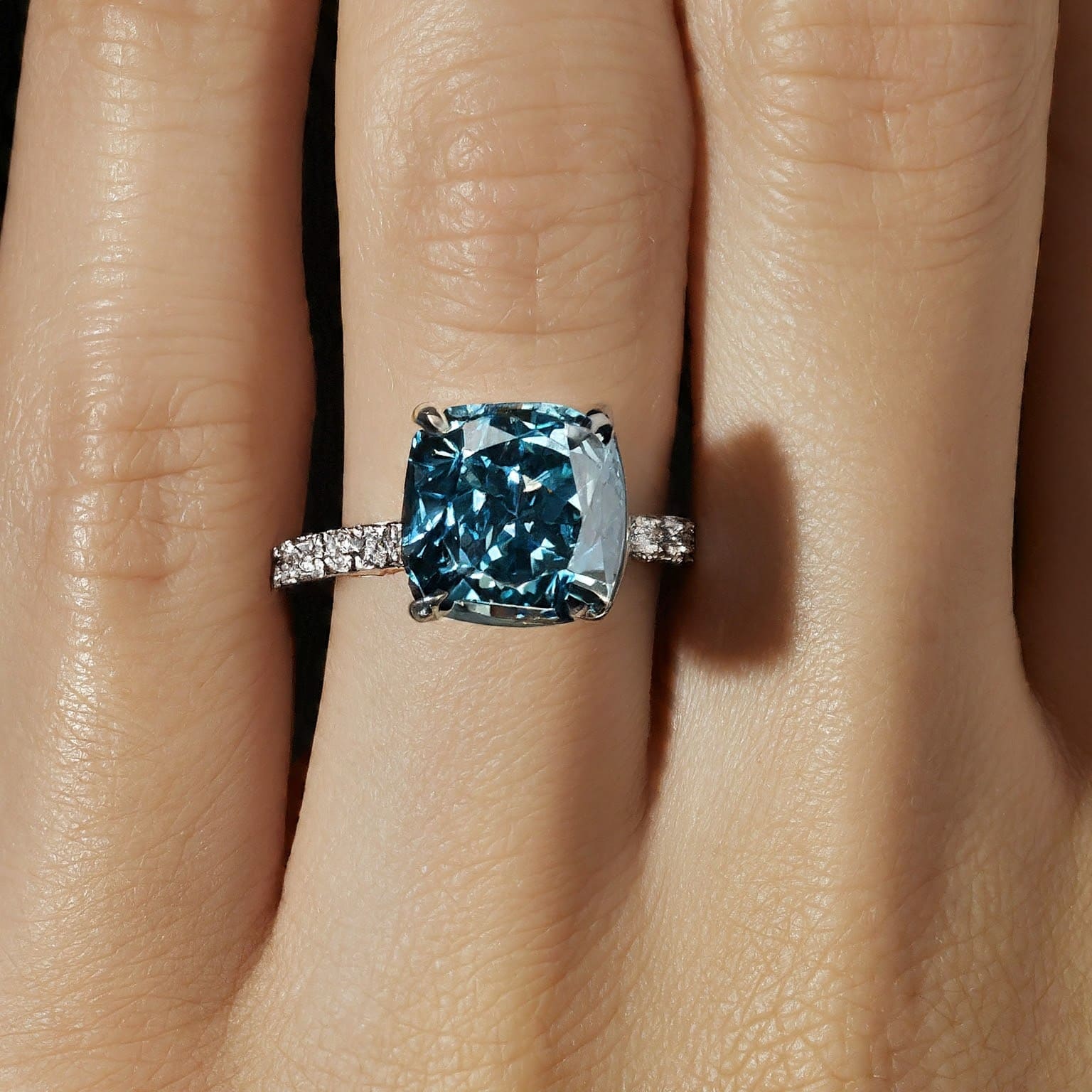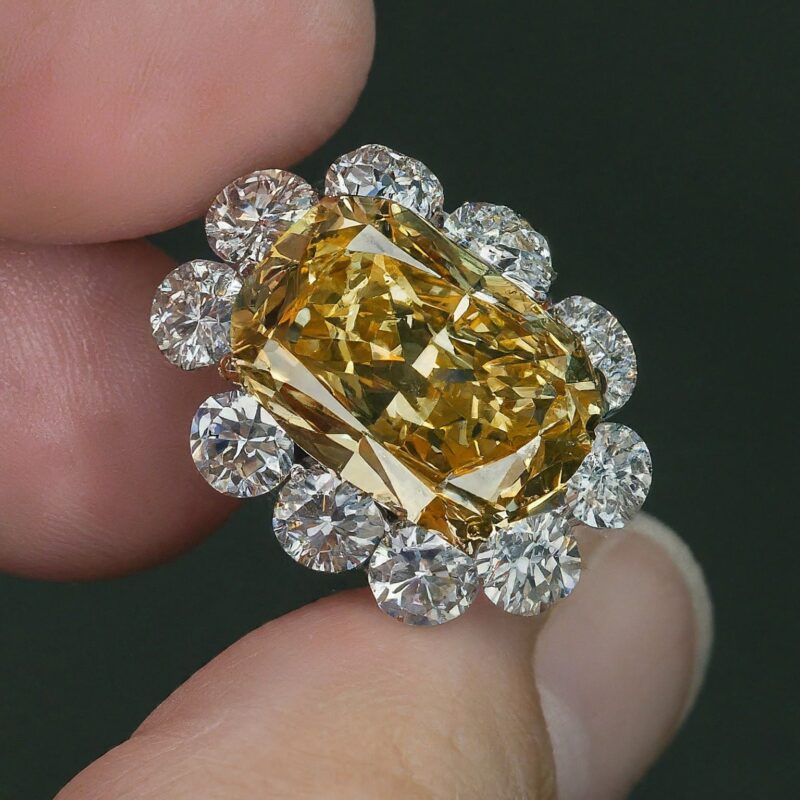There are several common misconceptions about diamond color that can lead to misunderstandings when buying or evaluating diamonds. Here’s a breakdown of these misconceptions:
1. Colorless Diamonds are Always Better
- Misconception: Many believe that colorless diamonds (D-F) are always superior and more valuable than diamonds with any color.
- Reality: While colorless diamonds are highly valued, fancy color diamonds with intense hues (such as pink, blue, or green) can be equally or even more valuable depending on their rarity and demand. Colorless diamonds are preferred for their classic purity, but fancy color diamonds have unique appeal and can command higher prices based on their color characteristics.
2. All Diamonds Have the Same Color Grade
- Misconception: Some assume that diamonds of the same color grade will look identical.
- Reality: Diamonds within the same color grade can still have variations in color intensity and hue. Factors such as the diamond’s cut and the lighting in which it’s viewed can also affect how color is perceived.
3. The Diamond's Setting Affects Its Color Grade
- Misconception: There’s a belief that the metal setting of the diamond can change its color grade.
- Reality: The color grade of a diamond is determined independently of its setting. However, the setting can influence how the color appears. For example, a yellow gold setting may make a diamond with a slight yellow tint appear more yellow, while a white gold or platinum setting may make it appear more colorless.

4. All Fancy Color Diamonds Are Expensive
-Misconception: It’s often thought that all fancy color diamonds are costly.
- Reality: While some fancy color diamonds, such as pink and blue, are very expensive due to their rarity, others, like brown or light yellow diamonds, can be more affordable. The price of fancy color diamonds depends on their hue, tone, saturation, and overall rarity.
5. Higher Carat Weight Means Better Color
- Misconception: Many people assume that larger diamonds will naturally have better color.
- Reality: Carat weight does not necessarily correlate with color quality. A smaller diamond with an excellent color grade can be more valuable than a larger diamond with a lower color grade. The color quality is assessed independently of carat weight.
6. Diamond Color is Only About Yellow Tints
- Misconception: Some believe that diamond color only refers to yellow tints and that all diamonds are otherwise colorless.
- Reality:Diamond color grades range from colorless to shades of yellow and brown, but there are also fancy color diamonds that come in a wide spectrum of hues, including pink, blue, green, and more. The color range is much broader than just yellow.

7. Diamonds of the Same Color Grade Will Look the Same
- Misconception: It’s often assumed that diamonds with the same color grade will look identical.
- Reality: Diamonds within the same color grade can exhibit variations due to factors like cut quality, fluorescence, and individual characteristics. Two diamonds graded as G may look slightly different depending on these factors.
8. Diamond Color is the Most Important Factor
- Misconception: Some people think color is the most crucial factor in determining a diamond’s value.
- Reality: While color is an important factor, it is only one of the Four Cs of diamonds—cut, color, clarity, and carat weight. The overall value and appeal of a diamond are determined by a combination of these factors.
9. Fancy Color Diamonds Have Lower Quality
- Misconception: There’s a belief that fancy color diamonds are of lower quality compared to colorless diamonds.
- Reality: Fancy color diamonds are graded on their color characteristics and can be of very high quality. Their value is based on their unique color attributes and can be very high, especially for rare colors and intense hues.
(Fancy color diamonds are diamonds that have a natural color other than white. They are graded on a scale of color intensity, from faint to fancy intense. The most common fancy color diamonds are yellow, but they can also be found in pink, blue, green, and other colors. Fancy color diamonds are rare and can be very expensive.

10. All Diamonds with Color are "Imperfect"
- Misconception: Some think that diamonds with color are inherently flawed or less desirable.
- Reality: Color in diamonds is a natural and desirable attribute, especially in fancy color diamonds where the color is a key feature. For colorless diamonds, any noticeable color is typically viewed as an imperfection, but in fancy color diamonds, color is the primary value determinant.
Summary
- Colorless Diamonds Are Not Always Superior: Fancy color diamonds can be equally or more valuable based on rarity and demand.
- Variations Within Color Grades: Diamonds of the same color grade can vary in intensity and hue.
- Setting Does Not Affect Color Grade: The setting influences appearance but not the actual color grade.
- Not All Fancy Color Diamonds Are Expensive: Prices vary by hue, tone, and saturation.
- Carat Weight and Color Quality: Larger diamonds do not necessarily have better color.
- Color Spectrum: Diamond color encompasses more than just yellow tints.
- Individual Appearance: Diamonds with the same color grade can look different.
- Overall Value: Color is important but is one of the Four Cs.
- Fancy Color Quality: Fancy color diamonds can be of high quality and value.
- Natural Color is Not Imperfection: In fancy color diamonds, color is a desirable attribute.
Understanding these misconceptions helps in making informed decisions when buying or evaluating diamonds.
Conclusion
By debunking these common misconceptions about diamond color, you'll be better equipped to appreciate the full spectrum of options available. Remember, the perfect diamond is the one that resonates with your personal taste and budget. Whether you prefer the timeless elegance of a colorless diamond or the unique allure of a fancy color diamond, knowledge is your most valuable asset in making an informed choice.
Ultimately, the beauty of a diamond lies in its ability to captivate and inspire. By understanding the nuances of diamond color, you can select a gem that truly shines and becomes a cherished treasure for years to come.



